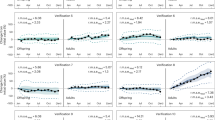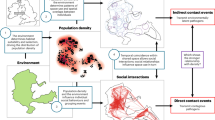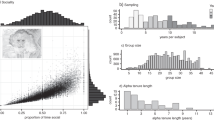Abstract
Grenfell et al. reply — The Moran effect refers to systems of population dynamics that are linear: under these circumstances, the long-term correlation between population densities will be the same as the correlation between the random environmental perturbations. The Soay sheep exhibit significant nonlinearity in their density dependence (Fig. 2a of ref. 1). At low populations, numbers tend to increase exponentially, with mean growth rate r=0.24, whereas at high densities (above a threshold of 1,172 animals), the population tends to decline, with mean r=−0.29. Thus, when populations on two adjacent islands are both above their thresholds, both will tend to decline, and when both are below their thresholds, both will tend to increase.
This is a preview of subscription content, access via your institution
Access options
Subscribe to this journal
Receive 51 print issues and online access
$199.00 per year
only $3.90 per issue
Buy this article
- Purchase on SpringerLink
- Instant access to full article PDF
Prices may be subject to local taxes which are calculated during checkout

Similar content being viewed by others
References
Grenfell, B. T. et al. Nature 394, 674–677 (1998).
Grenfell, B. T., Price, O. F., Albon, S. D. & Clutton-Brock, T. H. Nature 355, 823–826 ( 1992).
Leirs, H. et al. Nature 389, 176–180 (1997).
Author information
Authors and Affiliations
Rights and permissions
About this article
Cite this article
Grenfell, B., Finkenstädt, B., Wilson, K. et al. reply: Nonlinearity and the Moran effect. Nature 406, 847 (2000). https://doi.org/10.1038/35022649
Issue date:
DOI: https://doi.org/10.1038/35022649



